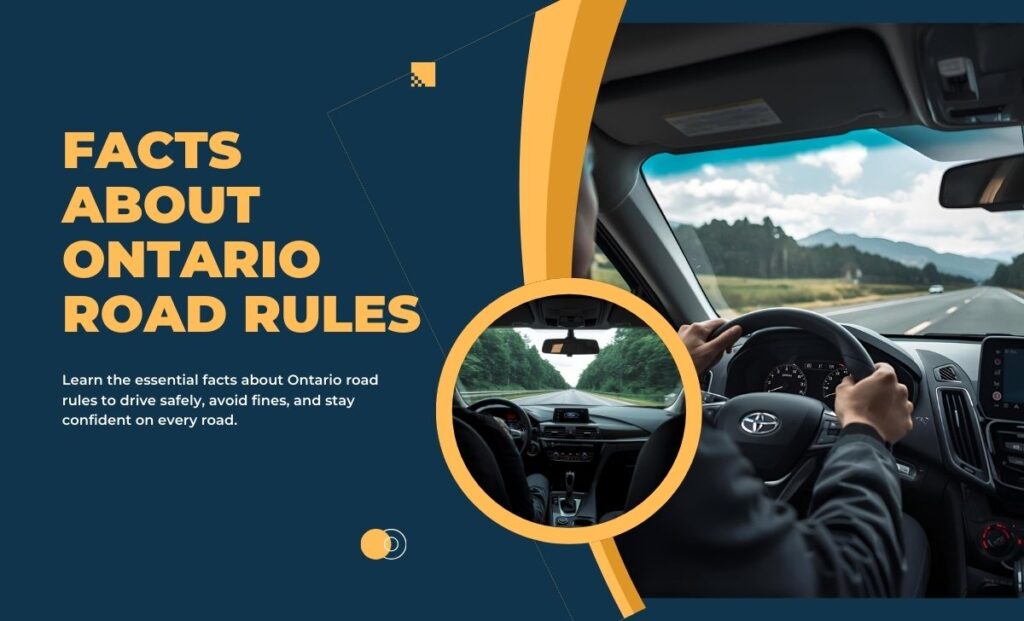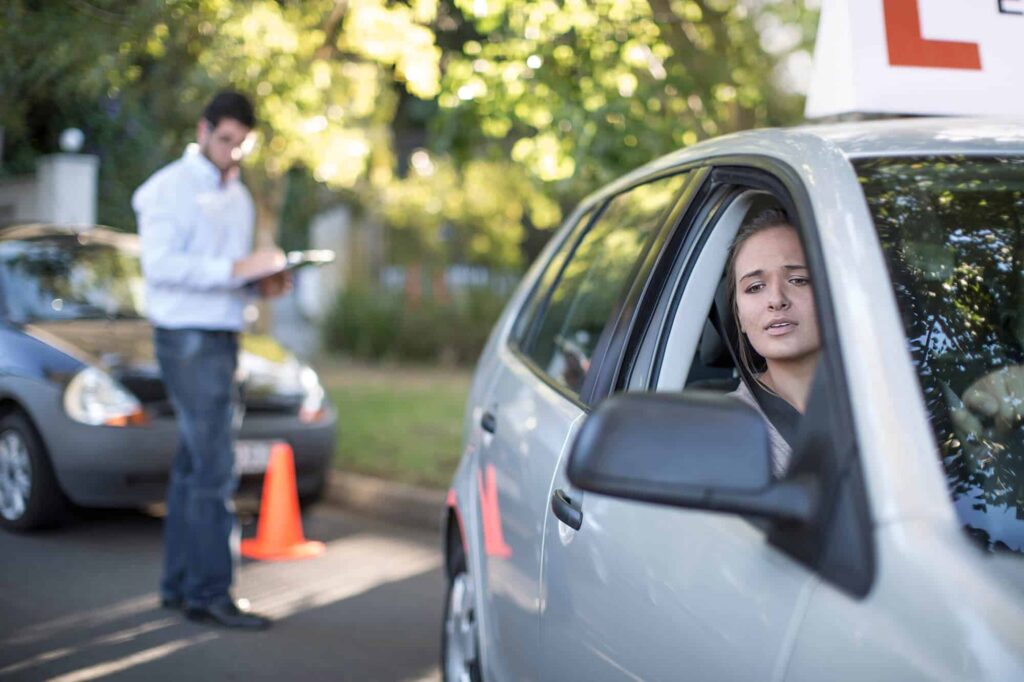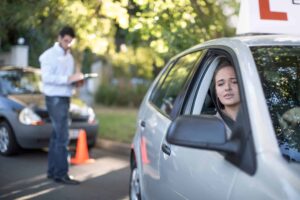Learning to drive in Ontario is exciting, but let’s be honest, it can feel a little overwhelming in the beginning. The streets are busy, traffic can be unpredictable, streetcars stop without warning, cyclists weave through cars, and people sometimes cross when you least expect it.
On top of that, highways move fast, winters bring icy roads, and there are so many rules to remember. The good part is, it doesn’t have to stay confusing. Once you know the basics and understand the Facts about Ontario road rules, driving slowly starts to feel natural. This guide will take you through it step by step, from licensing to city driving, highways, winter practice, and beginner-friendly exercises.
Facts About Ontario Road Rules
Ontario roads have their own playbook. Miss a rule, and you could end up with a ticket or worse. Ready to learn the facts that every driver should know?
Understanding Ontario’s Graduated Licensing System
Ontario uses a Graduated Licensing System (GLS) so new drivers don’t just jump into busy highways right away. It helps you build skills slowly and safely.
G1 License: Your First Step
Ready to start driving in Ontario? Your G1 license is the first step to gaining confidence and hitting the road safely.
Who can get it
- You must be 16 or older.
- You need to pass a written knowledge test about road signs and rules.
Restrictions
- You can’t drive alone. A fully licensed G driver must sit in the passenger seat.
- You cannot drive on 400-series highways or high-speed expressways.
- No driving between midnight and 5 a.m.
Why it matters
The G1 stage is about learning the basics without too much pressure. Think of it like training wheels.
Real-Life Practice Example
Start in a quiet neighborhood in Toronto or a small side street in North York. Practice simple skills like:
- Turning at stop signs.
- Stopping fully before crosswalks.
- Using signals properly.
- Checking mirrors every few seconds.
Once you’re comfortable, move onto busier streets like Danforth Avenue or Bathurst Street during off-peak hours.
Beginner Tips
- Adjust your seat and mirrors before you move.
- Keep both hands on the wheel.
- Don’t rush into traffic-heavy areas right away.
Common Mistakes
- Jumping straight onto busy roads like Yonge Street.
- Forgetting to check blind spots.
- Not signaling lane changes.
G2 License: Driving Independently
This stage gives you more freedom but also more responsibility.
When you can get it
After 12 months with a G1, or 8 months if you complete driver education.
Restrictions
- Zero alcohol in your system.
- If you’re under 19, you have nighttime passenger limits.
Focus
This is when you practice driving on your own in city traffic, on highways, at night, and in different parking situations.
City Driving Scenario
Imagine you’re driving on Queen Street during the day. A streetcar stops ahead, passengers step off, and a cyclist is coming up beside you. What do you do?
- Stop behind the streetcar doors.
- Check mirrors and shoulder-check for cyclists.
- Wait until the streetcar doors close before moving again.
Highway Merging Drill
Try merging onto the 401 during a quiet time, like Sunday morning.
- Signal early.
- Accelerate down the ramp until your speed matches traffic.
- Check mirrors and blind spots.
- Merge smoothly into the right lane.
Parking Practice
Go to a quiet plaza lot in Scarborough at night. Use empty spaces to practice:
- Reverse parking.
- Angle parking.
- Parallel parking along a curb or between cones.
Instructor Tip
“Take your time. Slow, smooth movements are better than fast corrections.”
Common Mistakes
- Overconfidence and speeding.
- Tailgating or lane drifting.
- Forgetting to adjust speed for weather.
G License: Full Privileges
Once you pass your G test, you have full driving rights. But the learning never stops.
What it allows
- Full highway use.
- Night driving.
- No passenger or alcohol restrictions (though BAC must stay under 0.08%).
Focus
You’re now expected to show defensive driving by planning ahead, anticipating risks, and staying calm under pressure.
Tip: Even experienced drivers check their mirrors often, plan their routes, and avoid distractions. Passing the test isn’t the end, it is the beginning of lifelong learning.
Speed Limits and Staying Safe
Knowing the speed limits is key to staying safe on Ontario roads. Learn the rules and drive confidently every time.
Standard Speed Limits in Ontario
- City streets: 50 km/h (unless signs show lower).
- Rural roads: 80 km/h.
- Highways: 100 km/h (some up to 110).
Automated Enforcement
- Watch for speed cameras in school zones, community safety zones, and construction areas.
- Tickets are mailed directly to the car’s owner.
Scenario
You’re driving past a school on Dufferin Street. Even if no kids are in sight, you must slow down when the lights are flashing. The risk is high, and so are the fines.
Tips
- Adjust your speed for rain, snow, or fog.
- Remember, limits are maximums, not targets.
Beginner Mistakes
- Driving too fast in residential areas.
- Ignoring construction zone signs.
- Overestimating braking distance in winter.
Distracted Driving: Focus on the Road
Distracted driving causes thousands of crashes each year in Ontario.
What counts as distracted driving:
- Texting, scrolling, or calling.
- Eating, drinking, or adjusting music.
- Looking at passengers instead of the road.
Penalties
- First offense: $615 fine, 3 demerit points, 3-day suspension.
- Repeat offenses = higher fines and longer suspensions.
Scenario
You’re stopped at a red light on Bloor Street and quickly check Instagram. An officer sees you. That’s still distracted driving.
Tips
- Set your GPS before starting.
- Put your phone in the glove box if you’re tempted.
- Use voice commands instead of hands.
Beginner Mistakes
- Thinking “just one glance” is harmless.
- Eating while steering.
- Texting while parked in traffic.
Move Over Law: Protecting Emergency Workers
Ontario law requires you to slow down and move over for emergency vehicles, tow trucks, and road workers with flashing lights.
Penalties
- Fines up to $2,000.
- Demerit points.
- Possible license suspension.
Scenario
You’re driving on the DVP and see a tow truck on the shoulder. If it’s safe, move to the left lane. If not, slow down significantly.
Mistakes to Avoid
- Not reacting until the last second.
- Forgetting to shoulder-check before moving over.
- Ignoring flashing lights if they seem “far away.”
Roundabouts and Intersections
Mastering roundabouts and intersections keeps you safe and confident on Ontario roads. Learn the rules and navigate with ease.
Roundabouts
- Yield to traffic already inside.
- Stay in your lane.
- Signal before exiting.
Intersections
- Always yield to pedestrians.
- Watch for red-light cameras.
- Slow down near schools.
Scenario
At a roundabout in Mississauga, a car is approaching from your left. Wait until it passes before entering. Once inside, signal before exiting.
Mistakes
- Stopping inside a roundabout.
- Forgetting to signal.
- Entering too quickly.
Pedestrian Crossovers
Knowing how to use pedestrian crossovers keeps everyone safe. Learn the rules and drive responsibly on Ontario roads.
Rules
- Yield completely to pedestrians.
- Stop if someone is waiting to cross.
- Never pass a stopped car at a crossover.
Scenario
You’re in East York near a park. A child waits at the crosswalk. Stop fully, even if they hesitate.
Mistakes
- Rolling through without stopping.
- Not noticing people stepping out from between cars.
Child Safety Seats
Using child safety seats correctly keeps little passengers safe. Learn the rules and protect your children on Ontario roads.
Basics
- Infants: Rear-facing until at least 9 kg.
- Toddlers: Forward-facing until 18 kg.
- Kids under 8 or 145 cm: Booster seat.
Tips
- Check straps every trip.
- Ensure seats are installed tightly.
Mistakes
- Using expired seats.
- Loose straps.
- Skipping boosters for taller children.
Alcohol and Drugs
Driving under the influence of alcohol or drugs is dangerous and illegal. Learn the rules to keep yourself and others safe on Ontario roads.
Rules
- Zero tolerance under age 22.
- BAC limit for full drivers: 0.08%.
- Cannabis and prescription drugs also apply.
Scenario
You’re at a friend’s party in Toronto and think “one beer is fine.” Wrong. Even a little can affect your reaction time.
Mistakes
- Driving late at night after drinks.
- Forgetting meds can impair driving.
Highway Driving
Highway driving can be tricky for new drivers. Learn the rules and tips to stay safe and confident on Ontario highways.
Rules
- Left lane is for passing.
- Always match speed when merging.
- Keep a safe distance (3–4 seconds).
Scenario
Merging onto the 401 at rush hour: stay calm, signal early, accelerate to match traffic, then merge. Don’t slam brakes or stop on the ramp.
Mistakes
- Tailgating.
- Driving too slowly in the left lane.
- Changing lanes without checking blind spots.
Winter Driving
Winter driving in Ontario can be challenging. Learn the rules and tips to stay safe on snowy and icy roads.
Tips
- Install winter tires.
- Drive slower on snow and ice.
- Clear all windows and mirrors.
Drills for Beginners
- Go to an empty parking lot after snowfall. Practice gentle braking, turning, and recovering from small skids.
- Practice increasing the following distance to about 5 or 6 seconds when driving in snow.
Mistakes
- Driving too fast for conditions.
- Forgetting to clear snow from the roof and lights.
- Oversteering during skids.
Stunt Driving
Stunt driving is illegal and extremely dangerous. Learn the rules to stay safe and avoid serious penalties on Ontario roads.
What it includes
- Speeding 40 km/h over the limit.
- Racing.
- Aggressive maneuvers.
Penalties
Fines, vehicle impoundment, license suspension.
Mistakes
- Thinking empty roads are safe for racing.
- Underestimating consequences.
Lane Use and Passing
Knowing how to use lanes and pass safely keeps you and others protected on Ontario roads. Learn the rules and drive confidently.
Rules
- Stay right unless passing.
- Always signal.
- Pass left, not right (unless the car ahead is turning left).
Mistakes
- Lingering in the left lane.
- Passing too closely.
- Cutting off other cars.
School Zones
Driving safely in school zones protects children and helps you avoid fines. Learn the rules and stay alert around schools.
Rules: Speed is usually 30–40 km/h. Slow down when the lights are flashing.
Example: Driving in Scarborough on a weekday morning? Kids might run out between parked cars. Even if you don’t see anyone, slow down and stay alert.
Tip: Keep an eye on both sides of the street. Kids can appear anywhere.
Emergency Vehicles
Knowing how to respond to emergency vehicles keeps everyone safe. Learn the rules and give way properly on Ontario roads.
Rules: If you hear sirens, pull over to the right and stop. Let the vehicle pass safely.
Common Mistakes
- Not noticing sirens early.
- Stopping in a dangerous spot.
- Braking too suddenly instead of moving over carefully.
Example: An ambulance comes up behind you on Eglinton Avenue. Check mirrors, signal, and move over smoothly. Stay stopped until it passes.
Tip: Always double-check your mirrors. Emergency vehicles move fast.
Vehicle Safety
Keeping your vehicle safe and road-ready protects you and others. Learn the rules and tips for safe driving in Ontario.
Checklist
- Tires are full and have good tread.
- Lights and brakes work.
- Mirrors and wipers are clean.
Tips
- Keep a small winter kit: blanket, snacks, flashlight.
- Don’t ignore dashboard lights.
- Keep at least half a tank of gas in winter.
Example: Before getting on Highway 401, a quick check can save trouble. Fix a flat tire or broken light before you drive.
Beginner Mistakes
Everyone makes mistakes when learning to drive. Learn the common beginner mistakes and how to avoid them on Ontario roads.
Common Mistakes
- Forgetting to look over your shoulder.
- Driving too close to the car ahead.
- Going too fast for conditions.
- Getting distracted by phone or passengers.
Fix: Drive defensively. Stay calm, leave space, and expect other drivers to make mistakes.
Example: On the Don Valley Parkway, if the car ahead brakes suddenly, having space gives you time to stop safely.
Tip: Always glance over your shoulder. It’s quick and can prevent crashes.
Tips for Confident Driving
Want to feel calm and in control behind the wheel? These tips will help you drive confidently anywhere in Ontario.
Start in quiet streets
Practice in neighborhoods or side streets with little traffic. This helps you get used to steering, braking, turning, and parking without feeling stressed. When you are ready, slowly try busier streets and small highways.
Learn road signs step by step
Focus on the most common signs first, like stop signs, speed limits, and school zones. Try to recognize them while driving. Over time, you will also notice warning signs, construction signs, and direction signs naturally.
Keep space between cars
Leave enough distance behind the car in front of you. In normal weather, two or three seconds is good. In rain or snow, leave more space. Extra room gives you time to stop safely if something unexpected happens.
Slow down in bad weather
Rain, snow, or ice makes roads slippery. Drive slower, brake gently, and avoid sudden turns. Slower driving helps you stay in control and reduces the risk of accidents.
Plan your route
Check your route before you start driving. Knowing your turns, highway exits, and busy streets makes driving less stressful. If you get lost, pull over safely to check your map or GPS instead of making sudden lane changes.
Drive smooth
Avoid sudden starts, stops, or sharp turns. Smooth driving keeps you in control, makes your car last longer, and helps passengers feel comfortable.
Check mirrors often
Look in your rearview and side mirrors regularly. This helps you see cars, cyclists, and pedestrians around you. Check your mirrors before braking, turning, or changing lanes.
Use signals every time
Always signal when you turn or change lanes. Even if the road is empty, it builds good habits and helps keep you and others safe.
Stay calm in traffic
Traffic jams, honking, or impatient drivers can be stressful. Take deep breaths, focus on your driving, and do not let frustration affect your decisions. Staying calm makes you a safer driver.
Expect mistakes from others
Other drivers may brake suddenly, cut lanes, or make mistakes. Stay alert, keep space around your car, and be ready to react safely. Defensive driving protects you and gives you confidence.
Conclusion
Driving in Ontario gives you freedom, but it comes with responsibility. At first, it can feel a bit scary with busy streets, traffic, and winter roads. The good news is, with practice and patience, it gets easier and more natural.
Key Takeaways
- Start slow: Practice in quiet streets before going to busy roads or highways.
- Know the rules: Understanding the Facts about Ontario road rules keeps you safe.
- Stay alert: Watch your mirrors and pay attention to other drivers.
- Drive for the weather: Slow down in rain, snow, or ice and leave extra space.
- Take it step by step: With time, you’ll feel confident driving in the city, on highways, at night, and in winter.
Passing your test is just the start. Keep learning, stay calm, and driving will soon feel natural. Start your journey with an MTO-approved driving school in Toronto and enjoy the freedom while staying safe on Ontario roads.






